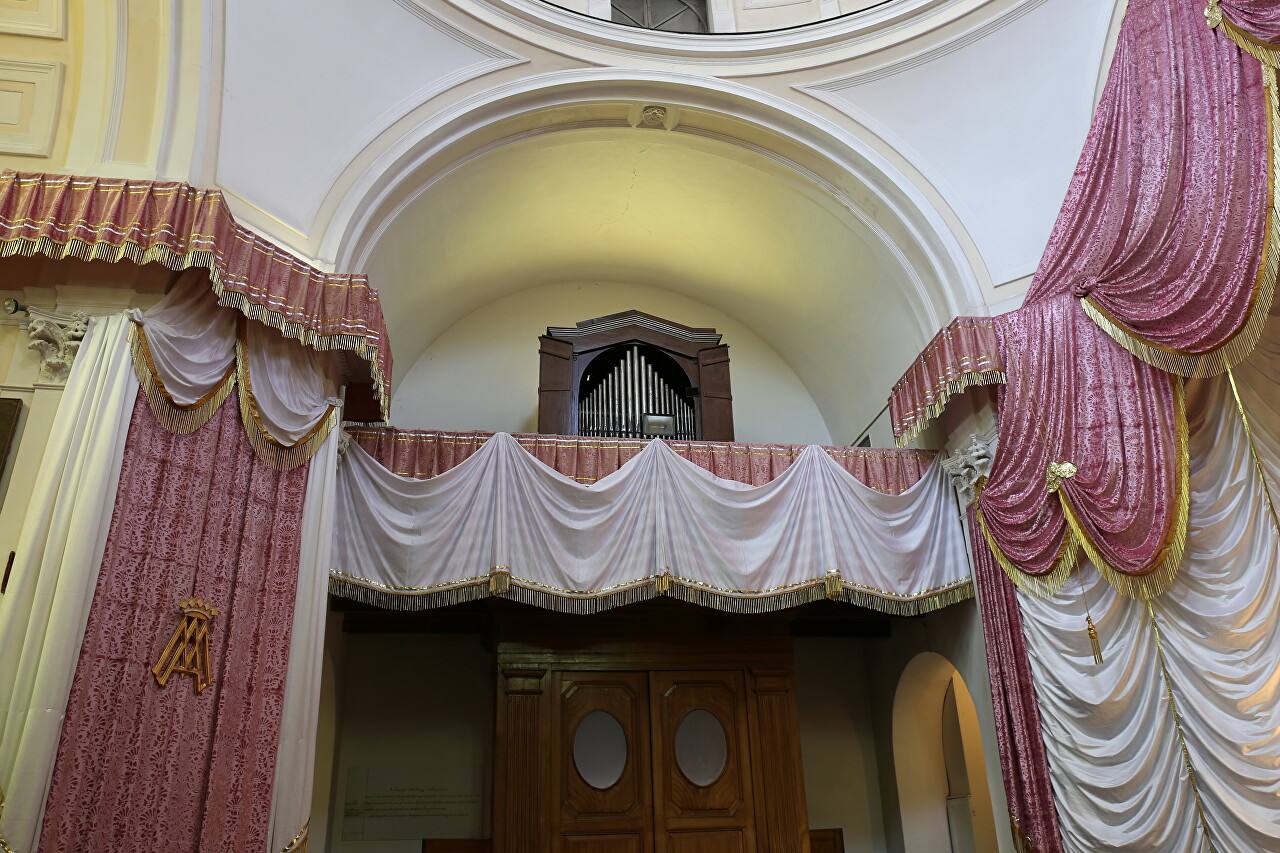Church of San Sebastiano, Forio
On Sant'Antonio Abate Street, a block from Matteotti Square, there is an interesting church that I have not seen mentioned in guidebooks (on the map) It is interesting that the church has the name of St. Sebastian (Parrocchia di S. Sebastiano), although it belongs to the parish of St. Anthony, but more on this below.
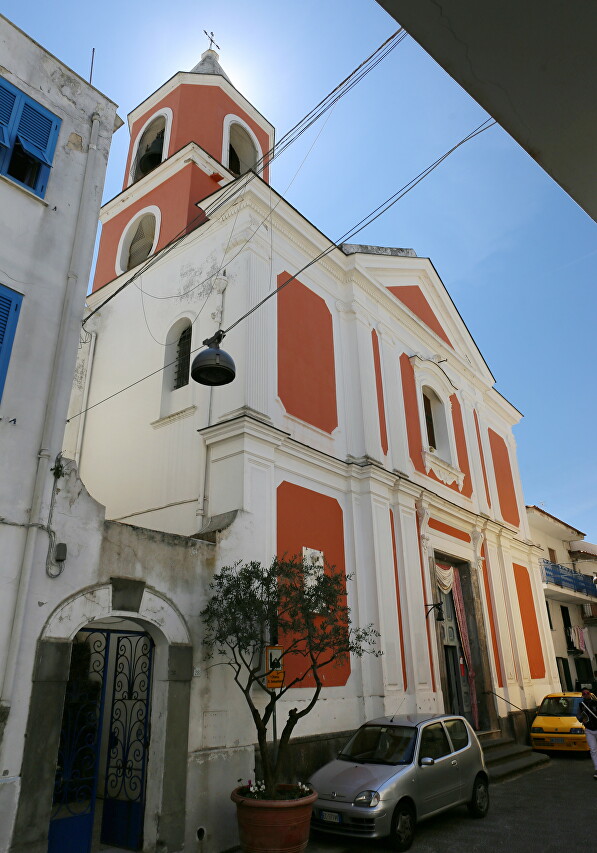
In the study of the famous local historian Giovanni D'ascia "History of the Island of Ischia" in 1867, there are such lines: "After the catastrophic eruption of the Epormeo volcano in 1301, Giacinto di Colantonio vowed to build a chapel, for which he bought a plot in the Tuocco quarter for 60 ducats.
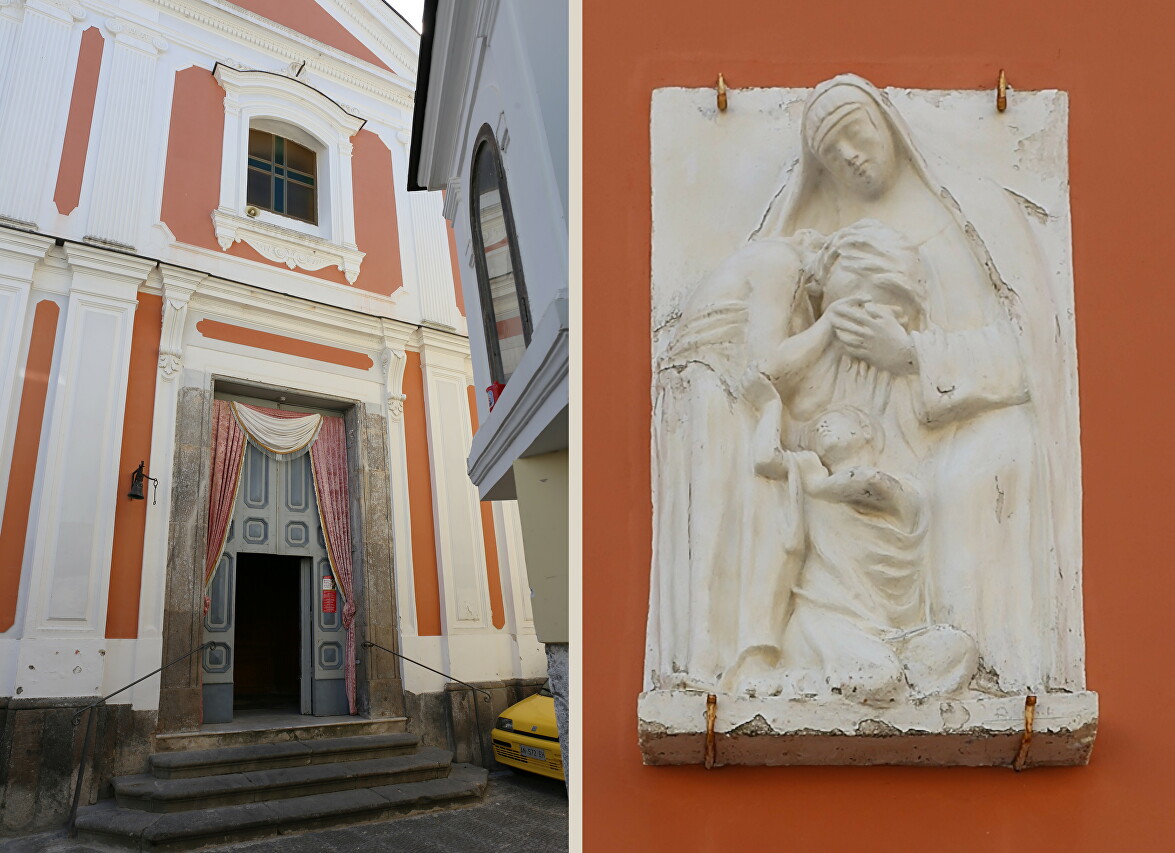
It was believed that the chapel was built in 1321 and consecrated in honor of San Antonio. The name was not chosen by chance - after the eruption, this saint became very revered on the island, as a protector from fire and smoke.
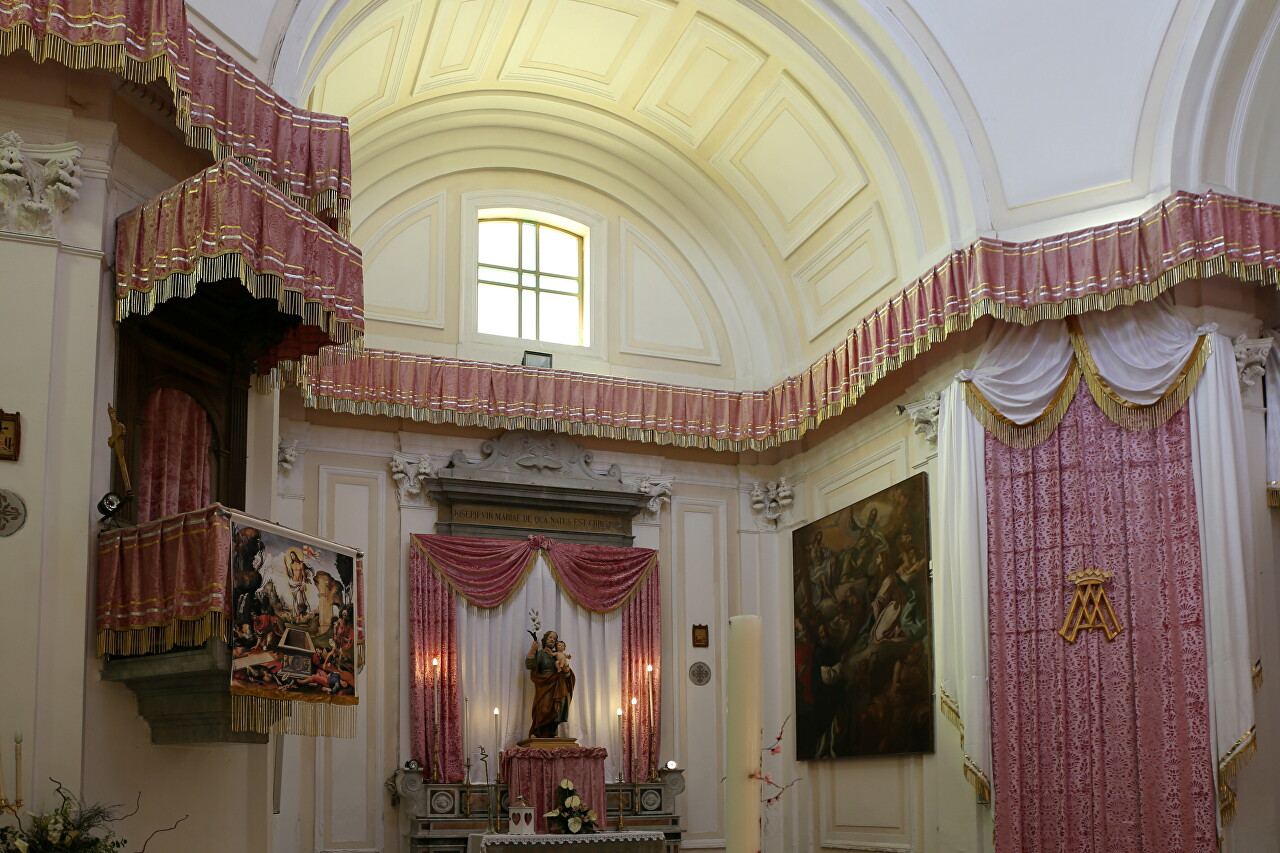
However, in 1971, historians discovered in the archives of Forio some documents indicating the later foundation of the temple. According to these records, the same Colantonio built the family chapel in 1701, and in 1774 his son, Vito Colantonio, transferred the ownership rights to the diocese of Forio. The church became the center of the new parish of San Antonio.
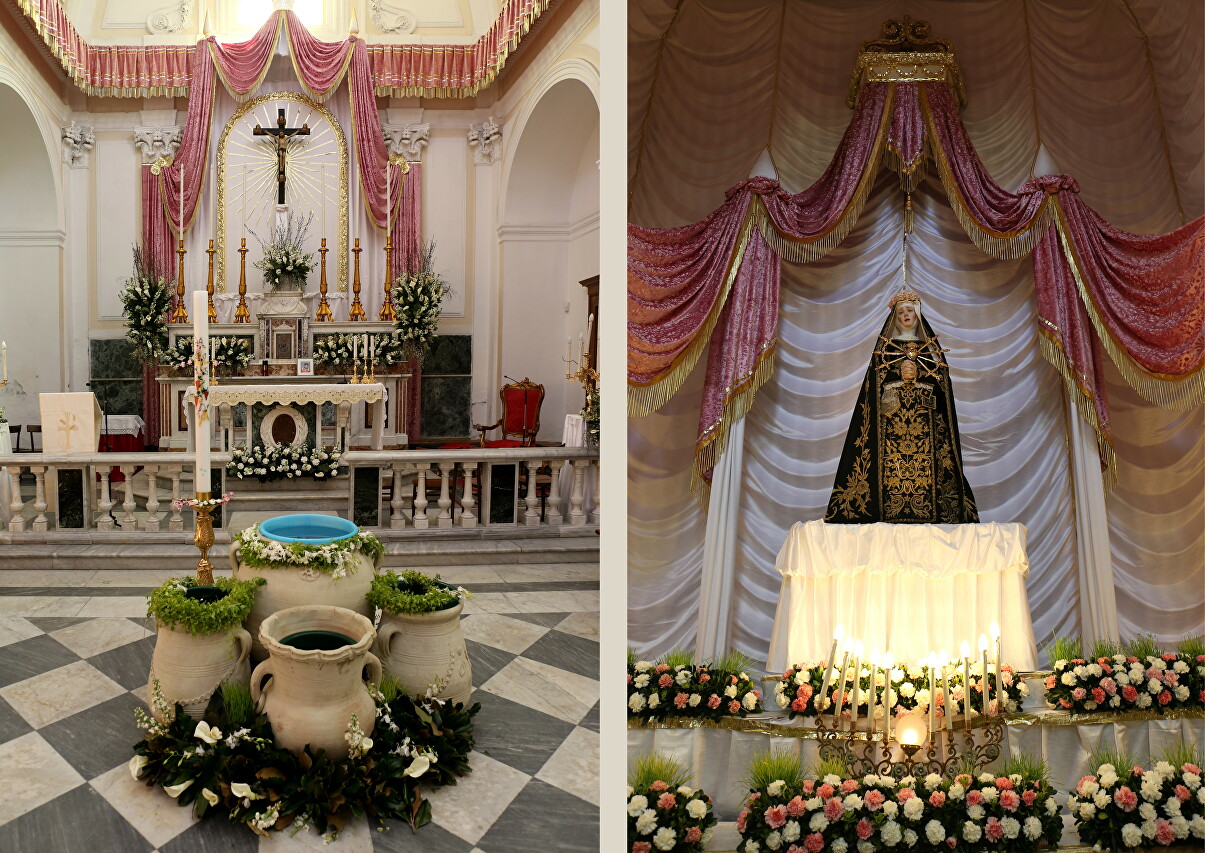
At the same time, in a rather unusual way, the church received a new name - in 1750, the parish of Saint Sebastian was founded in the village of Pezza, but the construction of the church was delayed due to lack of funds, and then it was completely curtailed. The priest assigned to the parish was transferred to the Loreto Basilica, which was also undergoing reconstruction. In 1774, construction here was also frozen, and the pastor was sent to the newly formed parish. Due to some misunderstanding, in official documents, the church began to be called by the name of the parish to which the priest was originally appointed.
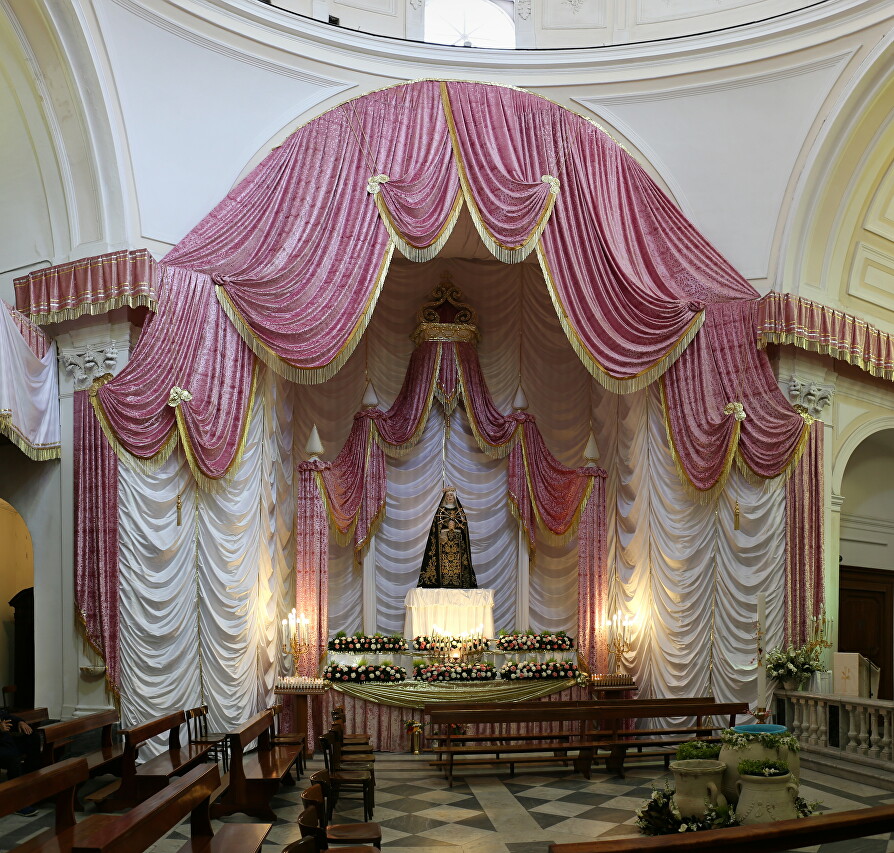
The building was substantially rebuilt in the mid-19th century. Expansion was hindered by the surrounding buildings, so the temple grew vertically - a new dome and bell tower were built, the facade was decorated in the neo-Baroque style.
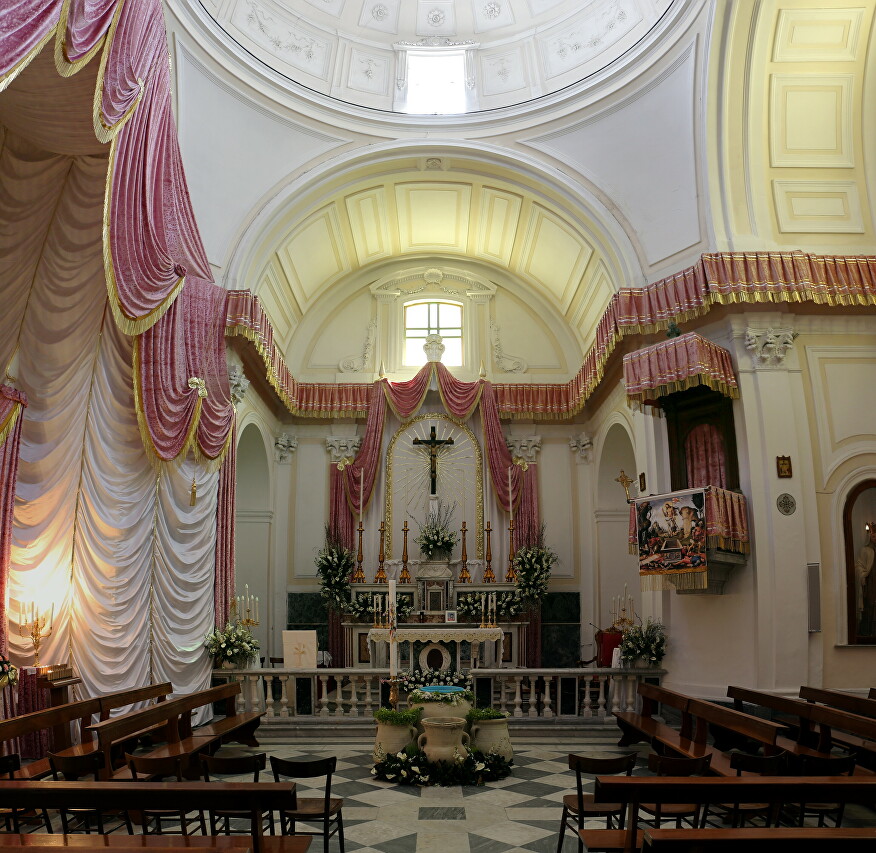
Most of all, I was struck by the interior decoration - a large number of curtains looks unusual and very beautiful. The entrance to the temple is also decorated with curtains. This is probably done on the occasion of some holiday.
